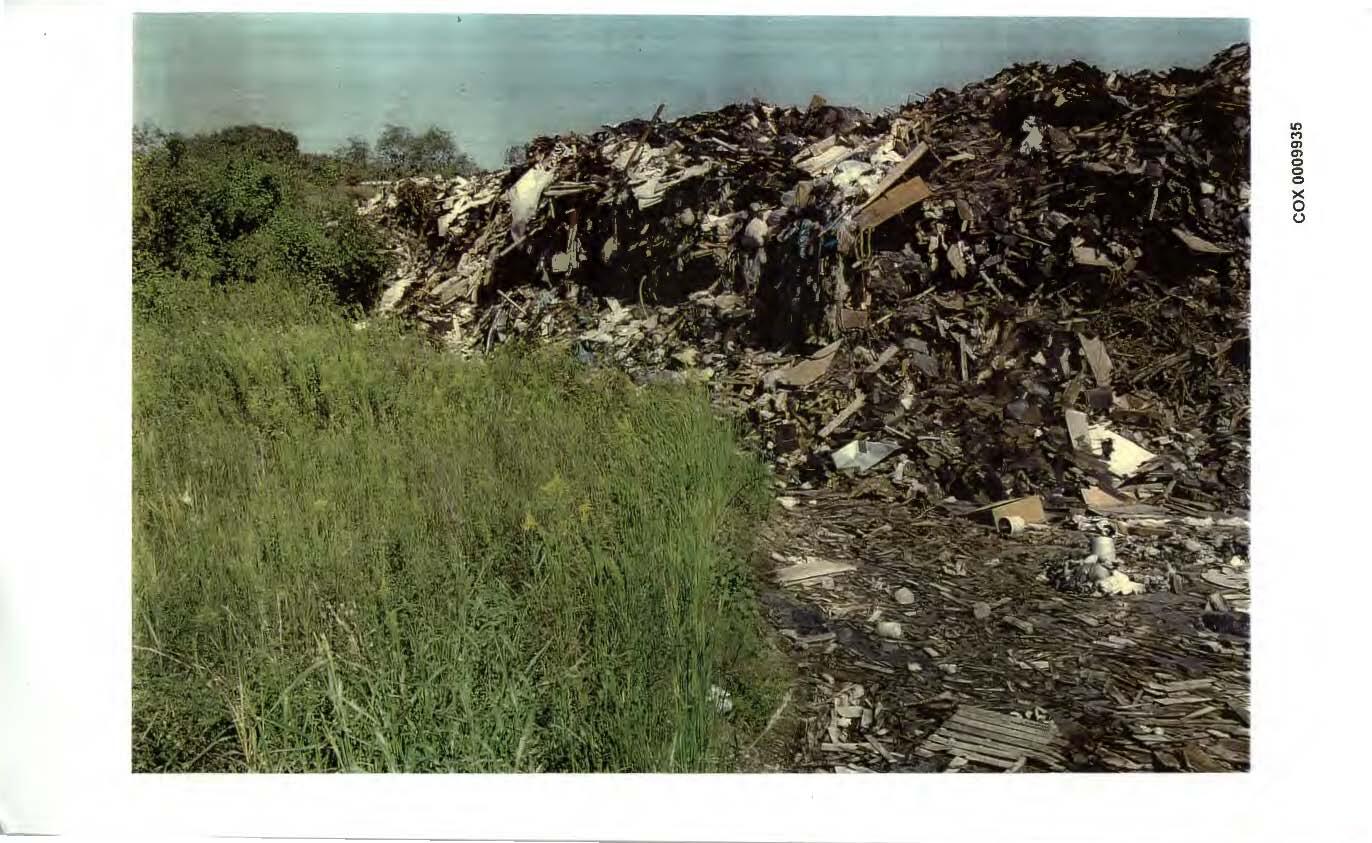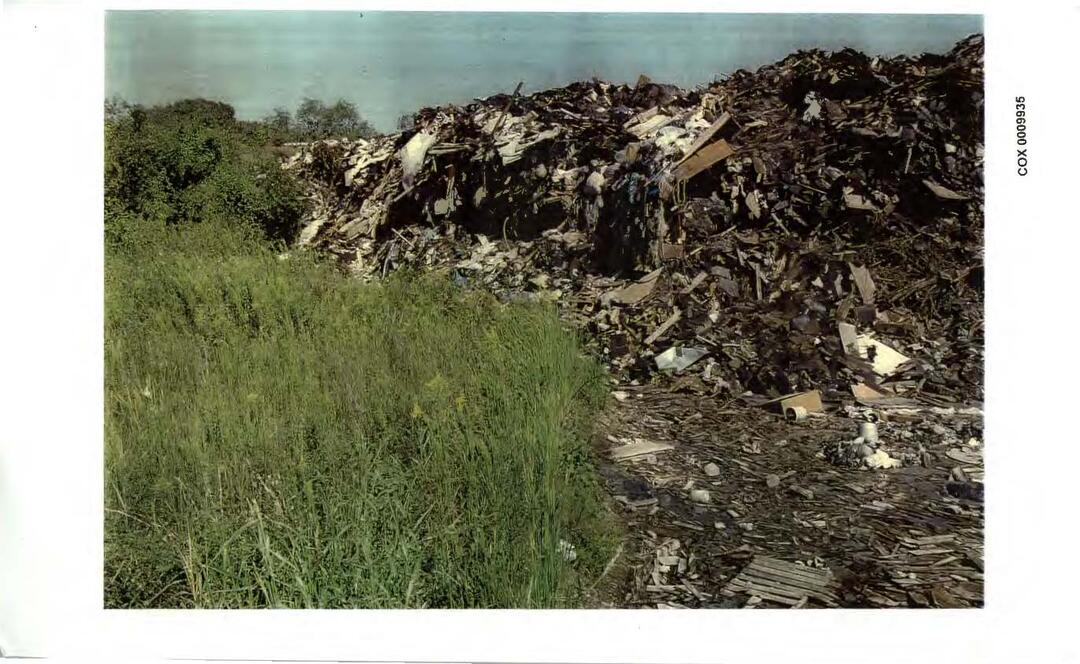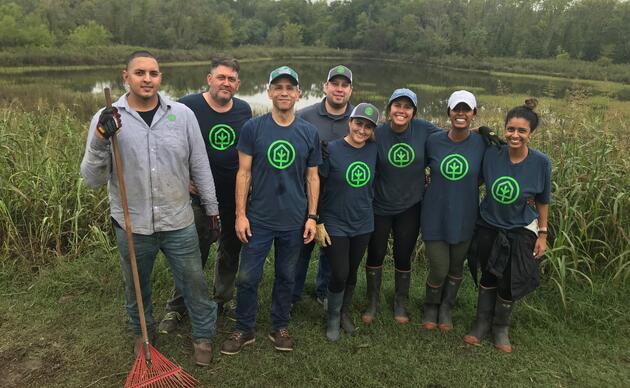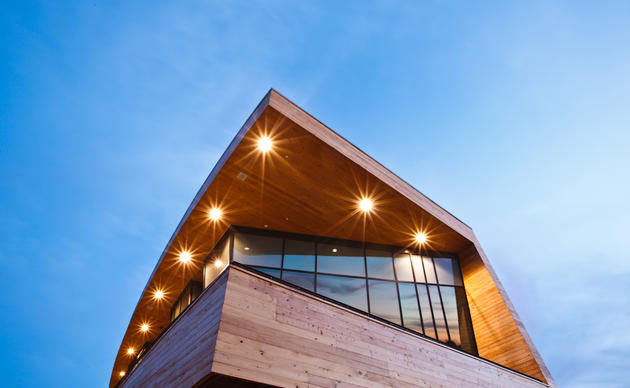The land where Trinity River Audubon Center is located has a storied past and inspiring future. It has transformed in many ways, for better and for worse. There is a major emphasis within our mission to help tell the story of all those who have a connection with the property, whether it be from neglect and disrepect, or helping create what it is today, or pushing forward to continue making it better. As Attorney Mike Daniels has shared - Trinity River Audubon Center is a worthy example of how a public / private partnership with a storied past SHOULD work.
In the Summer of 2024, TRAC's Texas Leaders in Conservation intern, Dylan Jordan, dedicated their time to helping us tell the story of the land in an impactful and inclusive way. They conducted interviews with local residents and change-makers to create a comprehensive timeline of the land's story. Below is their work, reflected in a compelling and thorough historical chronicle of Trinity River Audubon Center.
Prehistory
Millions of years ago, the area of Dallas County was a sea floor, leaving behind deposits of sand and gravel. Dallas was home to numerous Ice Age megafauna, including the Texas horse, glyptodons or giant armadillos, mammoths, camels, and more. Humans arrived in North Texas around 13,500 years ago, after a sea bridge connected from Asia to Alaska. The Clovis people were highly mobile groups of hunters and gatherers who were present across the North American continent, moving into the upper Trinity River area. North Texas was dominated by blackland prairies at the time, with wooded areas nourished by the Trinity River floodplain. The next human civilization, known as the “Carrollton Phase Archaic” appeared 6,000 years ago.
Native American Settlement and Colonization
From 1528 to 1841, Native American groups including the Caddo, Wichita, Cherokee, Kickapoo, Comanche, and Tawakoni lived in Dallas County. They typically settled along major waterways, with many groups settling around the Trinity River. Due to their location, Native American nations in the region were able to facilitate trade with numerous other nations.
This trade eventually attracted the founder of present-day Dallas, John Neely Bryan, who intended to create a trading post to offer goods between Native cultures. Under Spanish, Mexican, and Texan rule, colonization began to spread north in 1820. In 1839, the Treaty of Bird’s Fort was signed by several Europeans, including Edward H. Tarrant and George W. Terrell. This treaty approved the forced removal of Native Americans from North Texas to prepare the area for colonization. The Peters Colony, a series of impresario land grants, gained control over present-day Dallas in 1841, leading to an influx of European colonists. Native American groups were largely pushed into present-day Oklahoma. The forced removal of numerous Native American groups allowed for the founding of Dallas in 1841 by John Neely Bryan.
South Dallas Development
After the signing of the Emancipation Proclamation, numerous Freedman Towns were created in Dallas, many of which were located in South Dallas. In 1902, Texas instated a poll tax to limit the ability of newly freed slaves to vote. The poll tax was not repealed until 1966, 64 years later. The charter for the City of Dallas in 1907 included a section titled “Segregation of the Races,” enforcing city-mandated segregation. This was not appealed until 1968. Beginning in the 1930s, redlining began in the City of Dallas, targeting low-income and minority neighborhoods, affecting South Dallas. This prevented investment into South Dallas and perpetuated racial segregation in the city. The growth of Dallas also presented an increased need for sand and gravel for building materials, leading to the creation of mines throughout South Dallas. This increasing industrial development in the area led to numerous floods during the 1940s.
During the 1950s, South Dallas was split by present-day Interstate 45. During this time, many white and Jewish South Dallas residents left the area, leasing their homes to low and middle-class Black residents. South Dallas was further divided by the creation of Interstate 30 and Woodall Rogers Freeway in 1957 and 1962. After the ruling in Brown v. Board of Education and the refusal of Dallas schools to desegregate, the city began bussing South Dallas students into high-income public schools. Between 1943 and 1983, Dallas undertook numerous “urban redevelopment” projects, targeting Black communities in South Dallas. During this time, entire communities were cleared to make space for city development, displacing people and leaving communities in shambles. In 1991, the City of Dallas had its highest murder year at 500, a majority of which happened south of I-30.
Deepwood Landfill
During the 1970s, a number of middle-class Black families moved into a majority-white neighborhood near Loop 12 and Jim Miller Road situated next to an old gravel and sand mining pit. During this time, children often played in the quarry, and the neighborhood was surrounded by trees. Starting in 1976, the City of Dallas and the State of Texas were aware that dumping was taking place. In August 1976, officials from the Texas Natural Resource Conservation Commission and the City of Dallas Sanitation Department visited the Deepwood lot. In their report, they recommended continued monitoring of this site.
After the neighborhood became majority Black in 1982, the city issued the landowner, Terry Van Sickle, a permit to fill the existing pits with solid waste. For over 25 years, hundreds of trucks would go through the neighborhood, dumping numerous tons of illegal solid waste. The waste found at the site included demolition debris, tires, asphalt shingles, automobiles, bottles labeled “sulfuric acid” and “nitric acid,” medical waste, 55-gallon drums, and insulation. During the time of the Deepwood Landfill’s operation, people in the neighborhood reported seeing an increasing number of snakes, rats, and other vermin throughout the area and near their homes. The dump was easily accessible to children in the area, posing a threat to their safety.
The city conducted soil and water tests at the landfill after complaints were made by residents in 1983. The report and test results clearly indicated illegal disposal of solid waste and were sent to the State for analysis. In 1987, the city sued the owners of the Deepwood dump in state court for dumping solid waste without a permit. In December 1989, the state court required the Deepwood dump owners to submit a plan for closure of this site. An inspection conducted in April 1991 revealed that the site had not seized operations, leading the city to file a contempt motion. There was no further action taken to enforce this judgment or motion by the City of Dallas or the State of Texas.
While the site continued to operate, the City of Dallas contracted Dallas Demolition Excavating Co. to demolish various city properties. City contractors hired through Dallas Demolition disposed of the demolition debris at the Deepwood dump, which the city was aware of. In addition to this, the city implemented a plan to reclaim the area from the floodplain by filling in low spots. The objective of this plan was to eventually rezone the area for industrial usage, garnering more tax revenue. During the case of Cox v. City of Dallas, the city refuted that there was no evidence proving that the city’s waste had gone into the illegal landfill.
In total, the site garnered 560 complaints. From 1994 through 1997, Henry Nethery owned the Deepwood dump. During this time, the site was inspected by the city multiple times, with findings including asbestos, benzene, and medical waste. The waste found had the potential to start a fire and contaminate Elam Creek, a tributary of the Trinity River. On November 13, 1995, the City of Dallas filed an injunction against Nethery’s use of the site as a landfill, but the site continued to operate and accept waste. In December, citations were dismissed by a judge, arguing that the violations were outside of municipal court jurisdiction.
By June of 1996, the City of Dallas had involved the Environmental Protection Agency, the Texas Natural Resource Conservation Commission, the District Attorney, and the Dallas Police Department to enforce the closing of the landfill. After over 14 years of operation, a sting operation was conducted in September of 1996, resulting in the official closure of the landfill. During the sting operation, officials found medical waste, motor oil, hazardous waste, and over $200,000 in cash in the office of the landfill. Henry Nethery, owner of the landfill, and Herman Lee Gibbons, operator, were both charged with organized crime and incarcerated.
On February 21, 1997, the Deepwood landfill caught fire underground. This required firefighters to excavate the burning material and extinguish it with water. Air testing conducted during the fire produced results that were considered damaging to human health. While attempting to put out the fire, firefighters cut a sewer line, spewing thousands of gallons of waste into the dump. The fire burned for 52 days and cost the city $1.5 million.
On August 27th, 1999, District Judge Barefoot Sanders ruled that the City of Dallas, former landfill owner Terry Van Sickle, and Henry Nethery must clean up the Deepwood Landfill. The city appealed this decision. On June 26, 2001, the Fifth Circuit affirmed the district court decision.
Trinity River Audubon Center
Judge Barefoot Sanders played a crucial role in the remediation of the Deepwood landfill, overseeing the entire process. In a landmark decision, he mandated that the City of Dallas transfer control of the Deepwood lot to the National Audubon Society, aiming to create a comprehensive solution to reverse the environmental damage caused by the landfill. The National Audubon Society actively participated in the clean-up efforts, closely monitoring the city's progress in implementing a state-of-the-art landfill cap and methane collection system to mitigate potential health and environmental risks.
After years of dedicated work, the transformed site opened its doors in 2008 as the Trinity River Audubon Center. This remarkable metamorphosis turned a once-blighted area into a thriving educational and recreational space. The center now boasts engaging indoor exhibits that highlight local ecology and conservation efforts, five miles of scenic nature trails winding through diverse habitats, and a vibrant pollinator garden that supports local wildlife. Serving as both a nature preserve and an educational hub, the Trinity River Audubon Center has become an invaluable resource for the local community, offering opportunities to explore and connect with the natural world in the heart of urban Dallas.
Project Goals, Methods, and Learnings
The goal of this project is to spread awareness of the destruction that occurred before the Trinity River Audubon Center was built, and to bring attention to the role that environmental racism played in the creation of the Deepwood Landfill.
To achieve this goal, I worked with my team at TRAC to determine a group of community members and leaders who are knowledgeable about South Dallas, the Deepwood Landfill, and the City of Dallas government. This led me to reach out to T.R. Hoover, a local non-profit organization. Through this connection, I interviewed Jacqueline Mixon, Sherri Mixon, and Esther Watson. I then contacted the attorneys from the Cox v. City of Dallas case, Laura Beshara and Michael Daniels, conducting an interview as well as looking through their extensive archives from the case. Lastly, I reached out to Ben Sandifer, a City of Dallas environmental watchdog, completing two interviews.
For each interview, I conducted research on the interviewee to determine what questions to ask. I organized these questions into a list, asking them during interviews conducted at TRAC, a law office, and T.R. Hoover. Post-interview, transcripts were created and approved for each interview. These videos and transcripts are available to use for research or educational purposes.
In completing this project, I learned about the history of Dallas and the Deepwood Landfill, as well as skills in oral history, interviewing, and transcription. I feel that I am now better versed in environmental justice and using oral history as a tool to use in social justice work.
Acknowledgments
Thank you to Jacqueline Mixon, Sherri Mixon, Esther Watson, and everyone at T.R. Hoover for trusting me with recording and sharing your stories.
Thank you to Laura Beshara and Michael Daniels for your dedication to protecting civil rights and for giving your time and energy to this project.
Thank you Ben Sandifer for protecting the Great Trinity Forest and all the inhabits it, and for your extensive knowledge of Dallas's history.
Thank you to the entire TRAC team for helping me get this project off the ground and letting me bounce ideas off of you, and thank you to Marcus and Jacob for being present at interviews and connecting me to interviewees.
Lastly, thank you to Yvette Stewart at Audubon Texas for being an incredible leader and getting me involved with Texas Leaders in Conservation. I would not be here without you.
I am eternally grateful for you all.
Learn more and hear directly from the attorneys, citizens, and conservationists of South Dallas
Video: Ben Sandifer talks about the importance of the Trinity River
Video: Attorney's speak about the Deepwood case
Video: Sherri and Jacqueline Mixon talk about growing up in South Dallas
How you can help, right now
Volunteer With Us
Give back, use your skills, and learn more about the wild side of Dallas by volunteering with us.
Support Our Center
Conservation and outdoor education along the Great Trinity Forest and the Trinity River.






